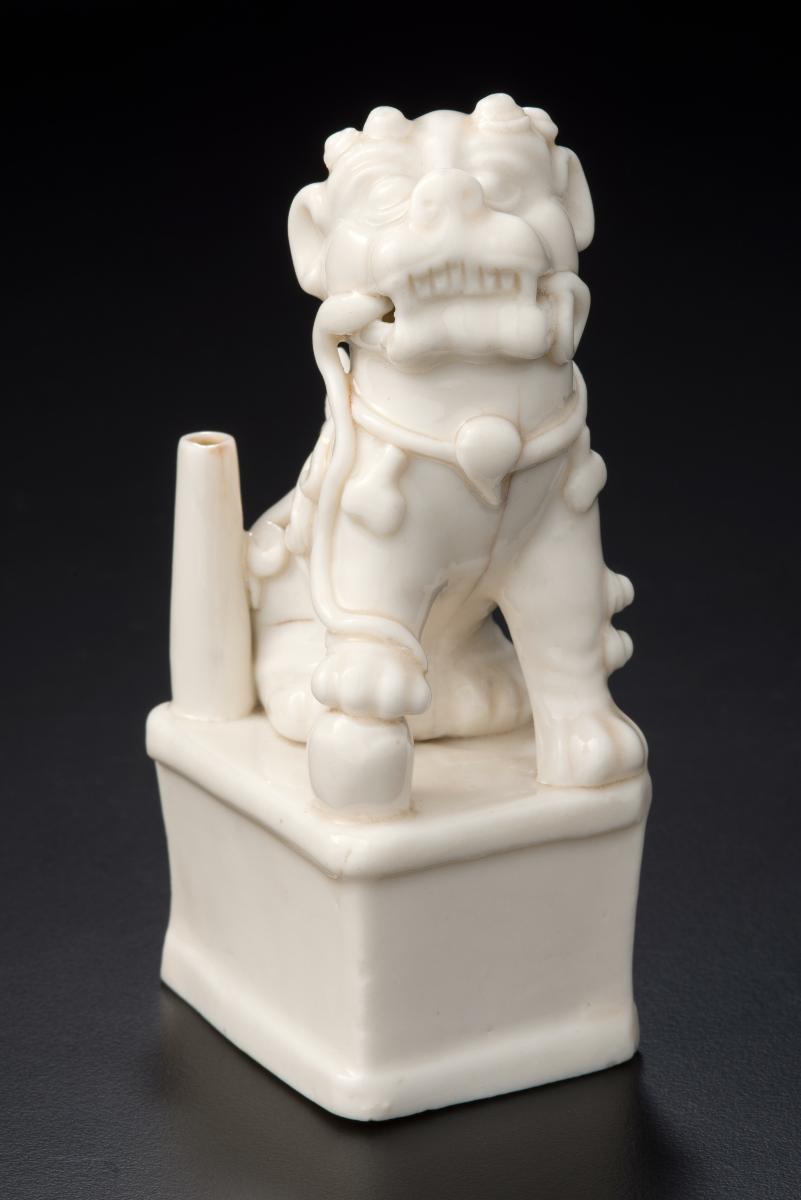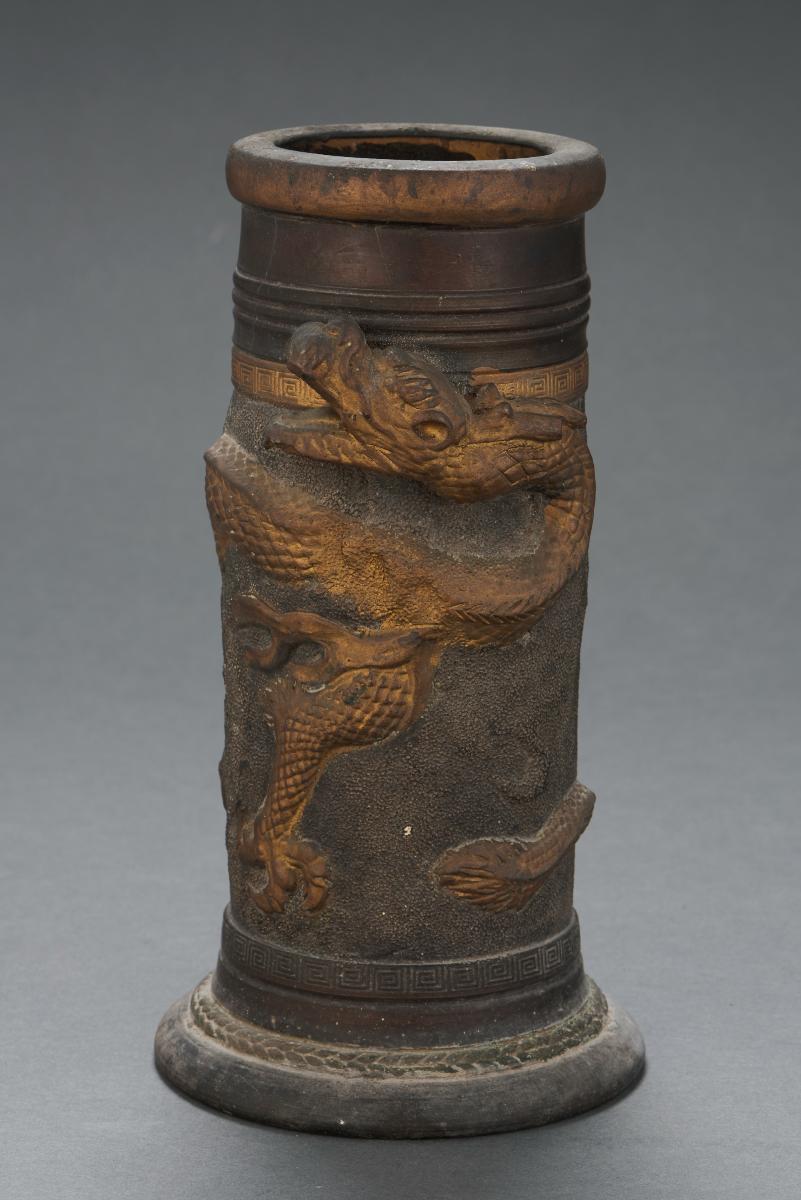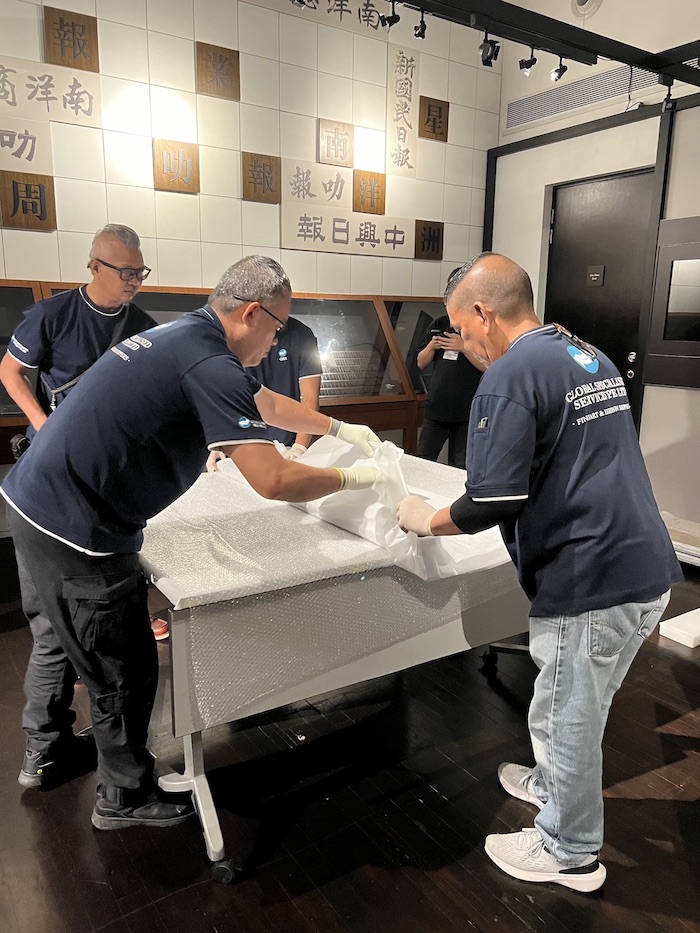This incense holder is modelled as a Buddhist lion seated on its haunches. Similar pieces have been identified as 'temple lions' with inscriptions on their bases referring to their use as offerings. They would also have been used at domestic altars. One explanation for the single holder was the use of incense to mark time - the name 'shi chen xiang', literally means ‘time incense’. Incense holders were also exported probably for use as decorative items in European homes.Dehua, located on the southeast coast of Fujian province, is well known for its production of white porcelain, known to Europeans as 'blanc de Chine'. The earliest Dehua porcelain was produced as early as the 14th century but the production and quality of these porcelain peaked around the 17th and 18th centuries.

















